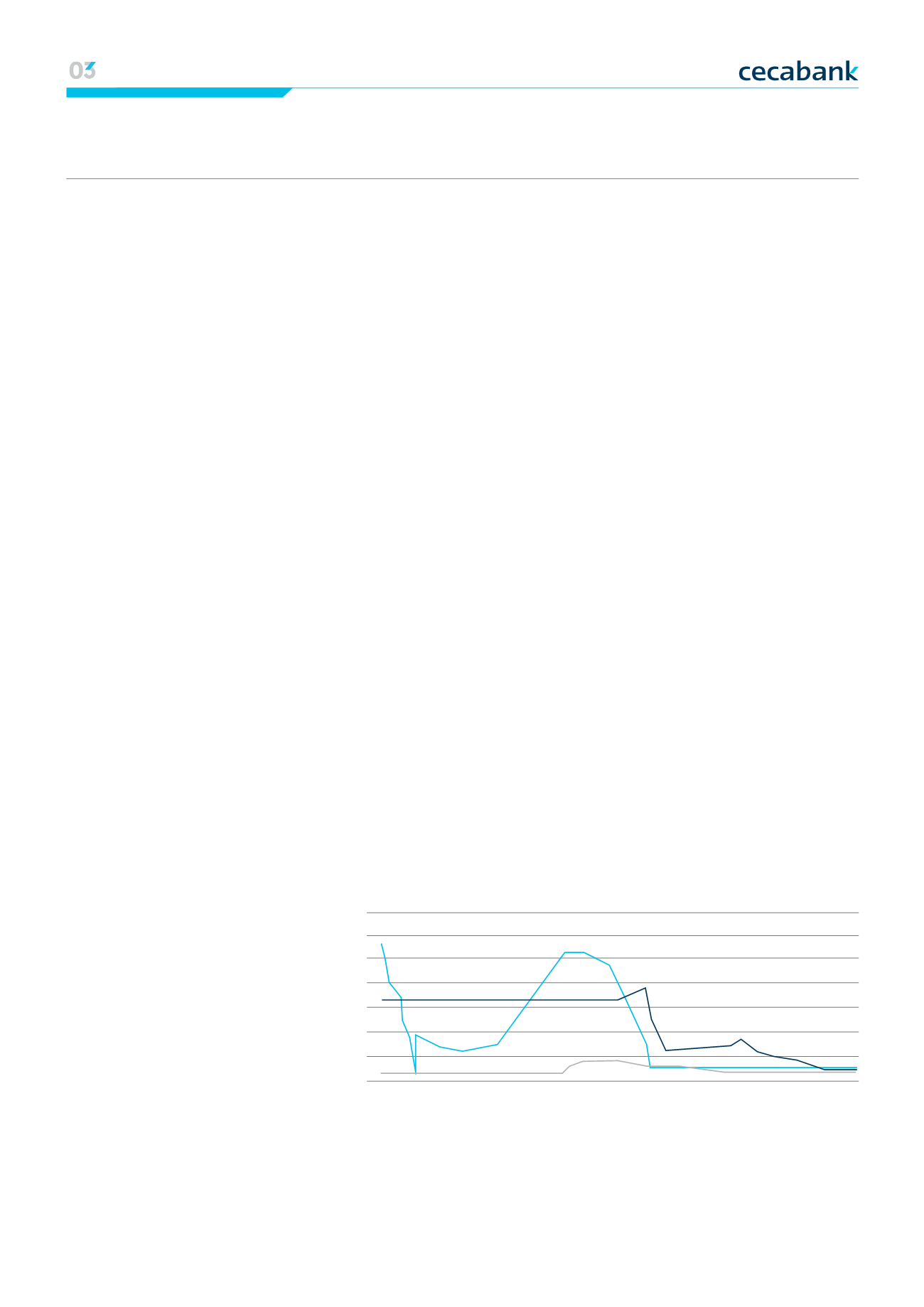

38
Our Business ModelEconomic
recovery in 2015
The Spanish economy’s recovery
is set to gain traction in 2015,
supported by various factors
that are more or less transitory,
but which will last for some time:
the sharp drop in interest rates
resulting from the ECB’s new
measures, which will intensify
with the new debt-purchase
programme, whereby the ECB
will buy 60 billion euros of
debt a month until September
2016; cheaper oil, which on
the demand side represents
increased disposable income for
consumers, while on the supply
side it represents lower production
costs; the cut in personal income
tax, combined with a more
expansionary course to public
spending; and finally, the euro’s
depreciation against the dollar,
although this factor’s impact on
exports and GDP
will be modest.
Nevertheless, constraints
on growth persist and it should
not be forgotten that Spain
remains highly vulnerable to
changing perceptions in the
financial markets.
Interest rates in the main economies
04-02-2001
04-02-2006
04-02-2011
04-08-2003
04-08-2008
04-08-2013
04-05-2002
04-05-2007
04-05-2012
04-11-2004
04-11-2009
04-11-2014
5
6
7
4
3
2
1
0
JAPAN
USA
EURO AREA
World
economic
growth in 2014
and 2015 will be led by the United
States, with moderate progress
in Japan and the Euro area, and
Spain’s economy posting the
fastest growth among the main
euro area economies in 2015.
Thus, Funcas estimates Spanish
GDP growth at 2.4 percent, two
percentage points higher than in
previous forecasts.
Trend in interest rates and
retail banking activity
Interest rates
are at historic lows
as a result of expansionary policies
in the context of a recession in
the global economy. Against
this backdrop there is much
speculation about the risks of the
“Japanification” of the European
economy, which would mean a long
period of slow growth with zero or
low inflation, or even deflation.
This leads to a narrowing of retail
institutions’ financial margin,
which also has repercussions
for customers.
Negative short-term interest rates
mean customers have difficulty
earning a yield on their deposits,
increasing demand for off-balance
sheet products.
For banks it means lower profits
on their portfolio, weakening
financial margins.
Persistence of low
interest rates.
Annual Report 2014 00 Strategic lines | Economic and regulatory context | Strengthening our model|
Business lines 01 Financial information | Profit & loss|
Activity|
Capital base|
Ratings 02 Risk management | The Cecabank risk function


















